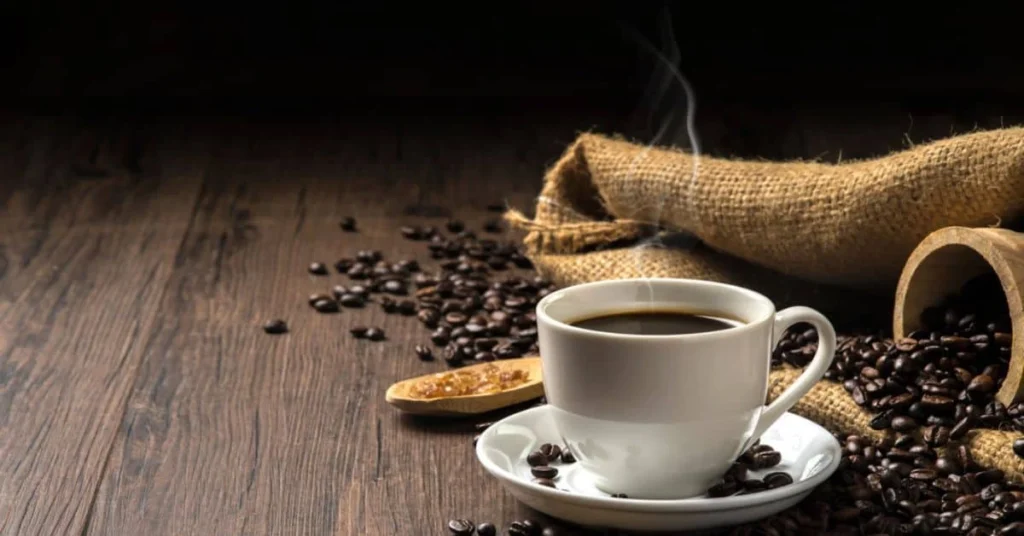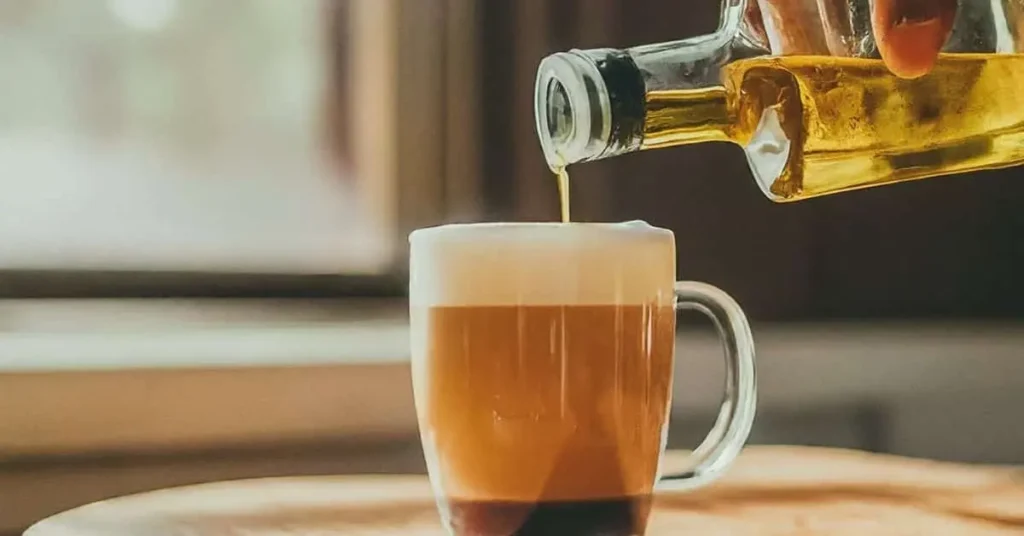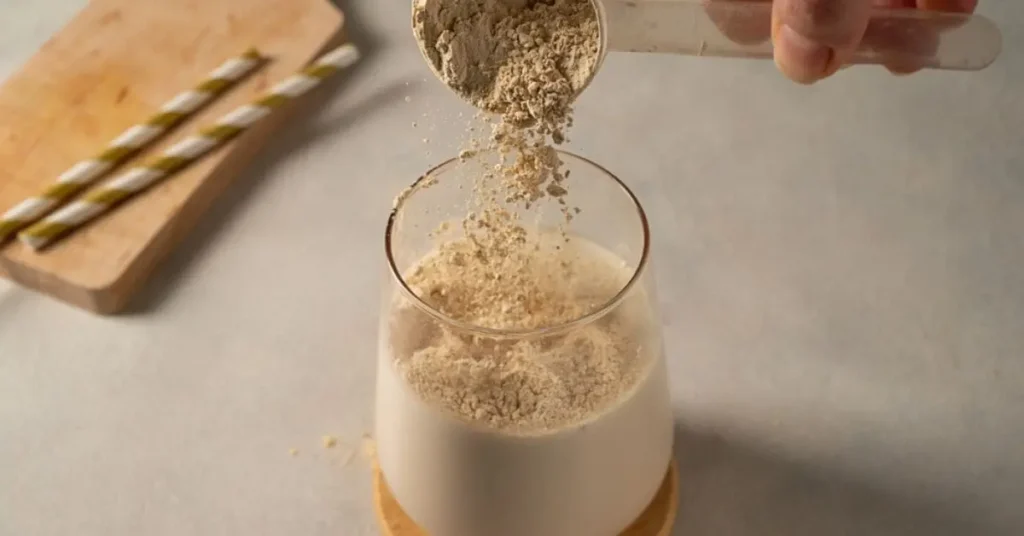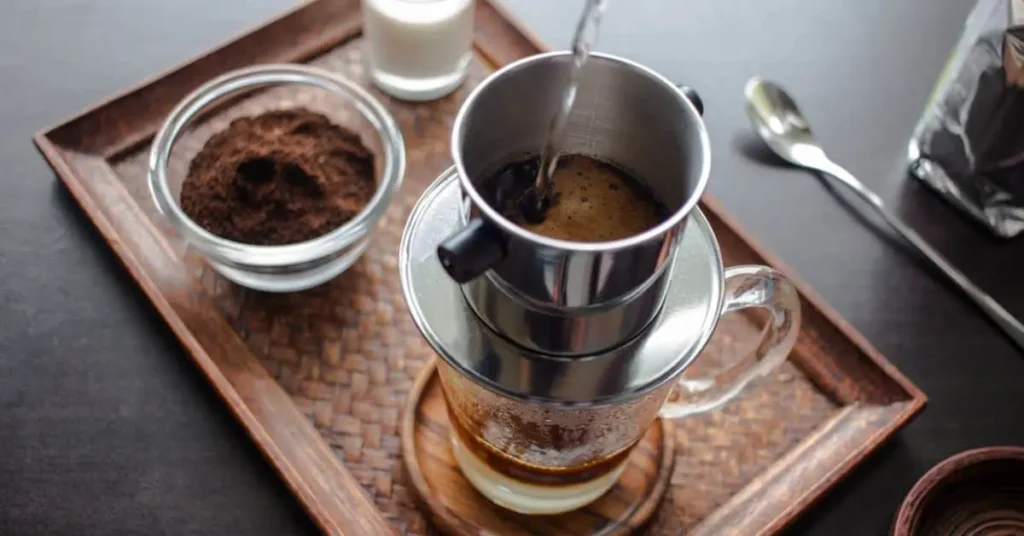Coffee enthusiasts often find themselves standing at the counter, staring at a menu filled with various coffee options. Among these choices, two popular ones often spark debate: the Flat White and the Cappuccino.
Though they may seem similar to the untrained eye, they offer distinct experiences in terms of flavor, texture, and preparation. In this blog post, we’ll delve into the key differences between a Flat White and a Cappuccino, helping you understand which might be the best choice for your next coffee fix.
The Basics of Flat White

Ingredients And Preparation
Flat White is a popular espresso-based coffee originating from Australia and New Zealand. It is made with bold espresso and velvety micro-foamed milk. The standard recipe calls for a double shot of espresso topped with steamed milk, creating a creamy, well-integrated beverage.
Texture And Flavor Profile
The drink’s texture is silky and smooth, with the milk evenly distributed to deliver a luxurious mouthfeel. The flavor profile is characterized by a balance between the rich, intense espresso and the sweet, creamy milk, resulting in a satisfyingly mellow taste.
The Basics of Cappuccino

Components And Brewing Process
A cappuccino is a popular espresso-based coffee beverage that consists of equal parts espresso, steamed milk, and milk foam. The components of a perfectly crafted cappuccino are crucial to ensure a balanced and enjoyable drinking experience. To brew a cappuccino, a barista starts by extracting a shot of espresso, followed by steaming equal parts of milk and creating a thick layer of milk foam. This careful process results in the distinctive layers and texture that define a classic cappuccino.
Foam And Taste Characteristics
The foam in a cappuccino plays a significant role in its taste and overall experience. Cappuccino foam should be thick, velvety, and have a creamy texture. When properly made, the foam provides a soft, rich mouthfeel, enhancing the overall coffee flavor. Additionally, the balanced combination of espresso, milk, and foam in a cappuccino results in a pleasant and slightly bittersweet taste with a smooth finish, making it a beloved choice for coffee enthusiasts.
Similar Post: Flat White Vs Cortado
History Of Flat White

The flat white and cappuccino both have rich histories with distinct origins and characteristics. The flat white is known for its velvety texture and strong coffee flavor, compared to the cappuccino’s frothy and lighter taste. Understanding the history of these two drinks can help coffee enthusiasts appreciate the unique qualities of each.
The Flat White has a rich history, originating in Australia and New Zealand before evolving in cafes worldwide.
Origins In Australia And New Zealand
Australia and New Zealand claim the invention of the Flat White, with both countries debating its true birthplace. Origins date back to the 1980s, where baristas aimed for a coffee with a velvety texture and balanced flavor.
Evolution In Global Cafes
The Flat White gained popularity in global cafes during the late 2000s, becoming a staple in many coffee shops. Its simple yet sophisticated nature won over coffee enthusiasts seeking a milder espresso-based drink. From its humble beginnings to its rise on the global stage, the Flat White continues to be a beloved coffee choice for many.
History Of Cappuccino

The history of cappuccino dates back to the 17th century when coffeehouses began to flourish in Italy. It is believed that the drink was inspired by the Capuchin monks who were known for their distinctive attire. The name “cappuccino” itself derived from their brown hooded robes, which resembled the color of the beverage.
Italian Influence
Italian influence played a significant role in shaping the cappuccino as we know it today. In the early days, it was customary to serve coffee beverages with milk separately. However, Italians pioneered the idea of combining espresso and milk, giving birth to the cappuccino. This distinctive combination created a rich and creamy texture that has become synonymous with the drink.
Italian coffee culture has always emphasized the importance of quality ingredients and impeccable craftsmanship. Baristas take pride in their ability to create visually stunning designs on the foamy surface of cappuccinos, adding an artistic touch to the overall experience.
Modern Variations
In recent years, cappuccino has evolved and adapted to cater to diverse tastes and preferences. Today, you can find various modern variations of the traditional cappuccino, each offering a unique twist to the classic recipe.
Some popular modern variations include:
- Flavored Cappuccino: By adding syrups such as vanilla, caramel, or hazelnut, baristas can create flavored cappuccinos that tantalize the taste buds with additional layers of sweetness.
- Iced Cappuccino: Perfect for hot summer days, iced cappuccinos are made by pouring espresso over ice and topping it with cold milk foam for a refreshing coffee experience.
- Vegan Cappuccino: With the rise of plant-based milk alternatives, vegan cappuccinos have become increasingly popular. Baristas now craft the drink using soy, almond, oat, or coconut milk instead of dairy, providing options for those with dietary restrictions or ethical considerations.
These modern variations have not only expanded the cappuccino’s flavor profiles but also made it accessible to a wider audience, allowing everyone to savor the delights of this beloved Italian creation.
Comparison Of Milk Textures
Discover the subtle variances in milk textures when comparing Flat White and Cappuccino. While Flat White boasts velvety microfoam, Cappuccino features a more frothy texture, resulting in a nuanced contrast of an indulgent, smooth mouthfeel versus a lighter, airy sensation.
Milk plays a crucial role in the flavor and texture of coffee-based beverages. When it comes to comparing the milk textures in a Flat White and Cappuccino, there are notable differences. Let’s explore how microfoam in Flat White and dense foam in Cappuccino contribute to the overall coffee experience.
Microfoam In Flat White
Flat White enthusiasts swoon over its velvety smooth texture, achieved through the creation of microfoam. Microfoam is a result of frothing milk using steam, incorporating tiny air bubbles evenly throughout. The key here is to achieve a silky, glossy texture by allowing the milk and air to blend harmoniously.
Microfoam in a Flat White creates a delicate mouthfeel that effortlessly blends with the coffee. The foam is well integrated with the milk, creating a seamless texture that gently glides across your palate. Its velvety consistency ensures a luxurious drinking experience.
Dense Foam In Cappuccino
When it comes to Cappuccinos, the milk texture takes on a different form. Instead of microfoam, Cappuccinos are known for their dense foam. This foam, created by frothing milk vigorously, contains larger air bubbles that separate from the milk.
The dense foam in a Cappuccino gives it a distinct character, providing a bold visual appeal. It retains its structure on top of the espresso, holding the flavor within its layers. Each sip combines the rich, full-bodied taste of the coffee with the creamy, frothy foam for a textural experience like no other.
Flavor Profile Showdown

When it comes to discussing the Flavor Profile Showdown between the popular coffee choices, Flat White and Cappuccino, there are distinct differences in taste and aroma that cater to different preferences.
Balanced Profile Of Flat White
Flat White emphasizes a balanced flavor profile with equal parts of espresso and steamed milk, resulting in a smooth and creamy texture that appeals to those who enjoy a harmonious blend of coffee and milk.
Stronger Coffee Flavor In Cappuccino
Cappuccino stands out for its stronger coffee flavor due to a higher ratio of espresso to milk, topped with a thicker layer of foamed milk that adds a rich and bold element to the drink.
Recommended Post: Flat White Vs Latte
Caffeine Content Debate

When it comes to the caffeine content of your favorite coffee drinks, the debate between flat white and cappuccino can be quite intense. Understanding the different elements that contribute to the caffeine levels in each beverage can help you make an informed choice based on your preferences and needs.
Analyzing Espresso Ratios
The ratio of espresso to milk plays a significant role in determining the caffeine content of both flat white and cappuccino. While a standard cappuccino is traditionally made with equal parts of espresso, steamed milk, and milk foam, a flat white typically contains a double shot of espresso and a thin layer of microfoam. This means that a cappuccino may have a higher milk-to-espresso ratio, potentially resulting in a slightly lower caffeine content compared to a flat white.
Effect Of Milk Volume
The volume of milk used in each coffee drink also affects the caffeine levels. A cappuccino often includes a more substantial amount of milk, which can dilute the overall caffeine concentration. On the other hand, the smaller amount of milk in a flat white allows the full strength of the espresso to shine through, leading to a potentially higher caffeine punch in each sip.
Serving Sizes And Presentation

When it comes to coffee, serving sizes and presentation are important aspects that can influence a customer’s experience. Understanding the differences in the serving sizes and presentation of Flat White and Cappuccino can help both baristas and coffee enthusiasts make informed choices.
Standard Cup Sizes
Standard cup sizes for Flat White and Cappuccino usually range from 6-8 ounces. While the serving size is similar, the presentation differs subtly, with Cappuccino traditionally being served in a smaller cup compared to the broader, shallow cup typically used for Flat White.
Decorative Toppings
When it comes to decorative toppings, Cappuccino is often adorned with a sprinkling of cocoa powder or chocolate shavings on top, adding a touch of elegance to the drink. On the other hand, Flat White is known for its signature latte art, with intricate designs crafted by skillful baristas using steamed milk.
Preference And Cultural Influences
Regional Affection For Each Drink
- In Australia, Flat White is a popular choice due to its smoother texture.
- Cappuccino, on the other hand, is often favored in Italy for its frothy foam.
Time Of Day Considerations
- In the morning, many opt for a stronger Flat White to kickstart their day.
- During the afternoon, people tend to enjoy a lighter Cappuccino as a pick-me-up.
Health Considerations

When it comes to your daily coffee fix, health considerations are a crucial factor to keep in mind. Understanding the impact of your favorite coffee beverages on your overall well-being can guide you towards making smarter choices. We explore the health considerations of two popular coffee choices: flat white and cappuccino.
Dairy Vs. Dairy-free Options
Many coffee lovers are conscious of their dairy intake due to lactose intolerance, dietary restrictions, or personal preference. When it comes to flat whites and cappuccinos, both options can be tailored to suit your dairy needs.
| Dairy vs. Dairy-Free Options | |
| Flat White | Cappuccino |
| Traditional Preparation: Whole milk | Traditional Preparation: Whole milk |
| Dairy-Free Alternative: Soy milk, almond milk, oat milk, etc. | Dairy-Free Alternative: Soy milk, almond milk, oat milk, etc. |
Both flat white and cappuccino can be enjoyed with dairy-free alternatives such as soy milk, almond milk, or oat milk. These non-dairy options provide a viable solution for those with lactose intolerance or those who prefer a plant-based lifestyle.
Caloric Content
If you’re watching your calorie intake, understanding the caloric content of your favorite latte can help you stay on track with your dietary goals. When comparing the caloric content of flat whites and cappuccinos, it’s important to note that variations can arise depending on the milk and additional ingredients used.
Here’s a breakdown of the approximate caloric content for each coffee choice:
- Flat White:
- Traditional Preparation (Whole Milk): Around 120-160 calories
- Dairy-Free Alternative (Almond Milk): Around 70-90 calories
- Cappuccino:
- Traditional Preparation (Whole Milk): Around 150-180 calories
- Dairy-Free Alternative (Almond Milk): Around 80-100 calories
It’s important to note that these caloric ranges are approximate and can vary based on serving size, additional sweeteners, and coffee shop preparation methods.
Whether you opt for a flat white or a cappuccino, there are ways to enjoy your coffee while considering your health needs. Choosing dairy-free options and being mindful of added sugars can help you make a more health-conscious choice without compromising on flavor.
Conclusion
Both the Flat White and the Cappuccino offer unique and delightful coffee experiences. Understanding their key differences in milk texture, flavor profile, preparation, and presentation can help you make an informed choice based on your personal preferences.
Whether you’re a fan of the creamy, rich Flat White or the balanced, frothy Cappuccino, each sip is sure to bring joy to your coffee journey. So next time you’re at the coffee shop, you can confidently order the drink that best suits your taste.
Ronsil
Meet Ronsil, the master barista behind EspressoRivo. With years of experience in the coffee industry, he brings a wealth of knowledge and passion to the table. As the owner of a successful coffee shop, Ronsil is a sought-after adviser in the field. His expertise and love for the craft shines through in every cup he serves. We are honored to have him as part of our team at EspressoRivo





